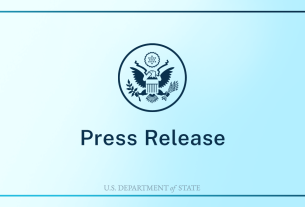Listen to this story:
As the plane descended, a once familiar sight appeared outside the window, one that I had not seen for 12 years: the waters of the Arabian Sea, the buildings in the distance and then, just when you think you’re about to land on the water, the runway of Aden’s airport.
When I left Yemen’s capital Sanaa in 2011, with just carry-on luggage, I didn’t think I would be away for so long.
But a dictatorship, threats, and then a war kept me away.
The war was why, when I arrived for my visit in April, I had to fly to Aden, Yemen’s second city in the south of the country, and not Sanaa, where I’m from, in the north. Sanaa is controlled by the Houthis, the Iranian-allied rebel group the Saudi-backed government has been fighting since 2014.
As I was to find out, despite all those years of fighting, and Saudi-led coalition air raids, the Houthis are still deeply entrenched in the north.
“You still look the same,” said my 31-year-old cousin, Ahmed*, as he greeted me at the airport. “It’s like you’ve only been away for a short trip.”
Ahmed and the rest of my family have been following my reporting on Yemen from Sweden, where I have been based since I left, and the country I am now a citizen of. But writing about Yemen is not the same as being in it. As Ahmed hugged me, my tears betrayed how I felt about being away from my country and my family.
“Don’t cry,” said Ahmed gently, as we began the 14-hour road trip to Sanaa. “Save your tears for the destruction and despair that you are about to see.”
Journey into exile
Before leaving Yemen I worked as a journalist. I had just started my blog, devoted to covering human rights in the country, when the 2011 uprising began. I covered the protests against then-President Ali Abdullah Saleh, who had ruled the former North Yemen since 1978, and then when it united with South Yemen in 1990, the Republic of Yemen.
In those early days of the protests, there was so much optimism about the future of the country, but at the same time, massacres of protesters warned of what was to come.
I was frustrated that only a few native Yemeni voices were writing about what was happening in Yemen in English, so I started to blog about it.
My writing brought warnings, hateful comments, and then death threats. But I continued until, in May 2011, three years into my work as a full-time reporter at the Yemen Observer newspaper in Sanaa, I left for Sweden to participate in a training course I’d applied for before the protests had begun.
While I was away, armed fighting started on the streets of Sanaa. “The violence is escalating. Don’t come back now,” my family would tell me on the phone. “If you do come back, you won’t be able to write, you can’t write any more. It’s too dangerous.”
I couldn’t imagine life without writing, so, at 25 years old, I made the decision to stay on my own in Sweden.
In my phone calls with my family, the main way I have been able to keep in touch during the long years of my exile, the warnings continued.
“If you come back and continue your journalism, you’ll end up in prison,” my mother would say. “I have no connections to get you out, and I will not come to visit you in your cell. You’ll be tortured and raped. Do not come back.”
My mother was terrified that my work would endanger me. Her solution was to try and scare me away from the profession.
I heard their warnings, but the pain of being away was growing unbearable. I’m sure everyone says the same thing about their country, or the place they grew up in, but Yemen had a hold of me.
Covering Yemen from afar was the only thing that filled the void inside me and helped ease the pain of missing home.

An opportunity to return
This April, a truce – which ended on October 2 after the Houthis failed to agree on its renewal – brought the opening I was waiting for.
An opportunity to spend the final days of Ramadan, and celebrate Eid, with the people I loved the most.
But my entire family, apart from Ahmed, remained oblivious to my plans. After all their warnings, I didn’t want to have them worrying while I made the arduous journey.
The trip from Aden to Sanaa was never an easy one – it passes from Yemen’s southern coast through the mountains, along winding roads with huge drops, and some of the most beautiful scenery you’ll see, the landscape changing from Ibb’s green mountains, to Dhamar’s fields, and then to the dustier, and yet still majestic, mountains of Sanaa.
That beauty was still there, but the trip was now far harder to make.
To avoid front lines, the route takes several detours, sometimes along roads that can barely be described as such, which occasionally flood in the summer rainy season.
Many have lost their lives along these treacherous passages – secondary casualties of this brutal war. Another cause of significant delays: the approximately 40 checkpoints we had to pass through along the road that belonged to the various parties to the conflict.
These checkpoints leave you drained, not only because of the gruelling interrogations that take place there, but also because of the realisation that you’re in a divided country, and Yemen is no longer a united land.
“Where are you from? Show me identification,” the guard yelled as Ahmed and I arrived at a checkpoint controlled by the separatist Southern Transitional Council (STC).
The United Arab Emirates-backed STC, the major force in southern Yemen, controls all the checkpoints along the road we took, up to the central governorate of al-Bayda.
The STC guards had more questions: What city we were travelling to, where the car’s papers were, and whether they could take some of our qat (for all of Yemen’s divisions, qat, a mild narcotic, remains a great unifier).
As we drove away from the checkpoint, Ahmed explained why we had not had much trouble.“They wanted to know if we were from Sanaa,” Ahmed, who was born and raised in Sanaa, said.
“But my ID says that I’m from Hadramout instead.” Hadramout, a large governorate in eastern Yemen, has stayed out of much of the tension between the north and south. While it is a southern governorate, and separatist sentiment exists there, it has been spared much of the direct fighting that has occurred between government forces and separatists in other parts of the south.
Back in 2016, Ahmed had managed to change his identification card to show his residence as Hadramout, knowing that it would save him from a lot of suspicion on trips around the country.

Reunited with family and friends
As we travelled, the physical effects of this war became visible. Refugees and migrants, seemingly east African, walked along the roads, having picked a country at war to be their transit point to the Gulf. Tents housing internally displaced people dotted the landscape.
Infrastructure – such as roads, bridges and houses – was destroyed. Air raids and shelling had left roads impassable, forcing cars onto alternate routes.
“The car accidents that happen because of these unpaved roads are horrific,” Ahmed told me, almost nonchalantly.
“You know, I follow a great Facebook page that shares updates about car accidents and I never drive without checking it.”
When we arrived in Sanaa, I went straight to my family’s home. They were shocked and overjoyed to see me. Seeing my mother again, and being able to hold her, was amazing.
After all the hugs and tears of happiness, she was able to give me comprehensive updates on everything that had happened to our neighbours, relatives and friends.
Some had passed away, some had fallen ill, and many others had lost their jobs and depended on donations.
Things were a lot worse than when I left. My conversations with family members and friends were often about the catastrophic economic hardships that they had to go through on a daily basis.
Even if you receive your salary, and many millions do not, it is often worthless as a result of high inflation. Food prices are now extraordinarily higher than before I left Yemen, with some items at approximately the same price as I would see in my local supermarket in Stockholm, and sometimes even higher.
“Thank God I still have a job, but the salary isn’t enough to pay for all my monthly expenses,” my cousin Najat*, who is like an older sister to me, explained. Hearing her recount the hardship of the last few years made me sad and outraged.
Her side hustle, making and selling bakhour, wood chips soaked in perfumed oil and burned as traditional incense, was helping her get by.
“If I didn’t have that, I don’t know how I would have survived,” she said. “At home, we try to minimise our expenses: We almost never use electronics such as the television or the fridge because we need to lower our electricity bills. We buy and eat meat only on special occasions, maybe twice a year, during Eid, because it’s so expensive.
“I walk most of the time because transport has become so expensive amid the fuel shortages.”
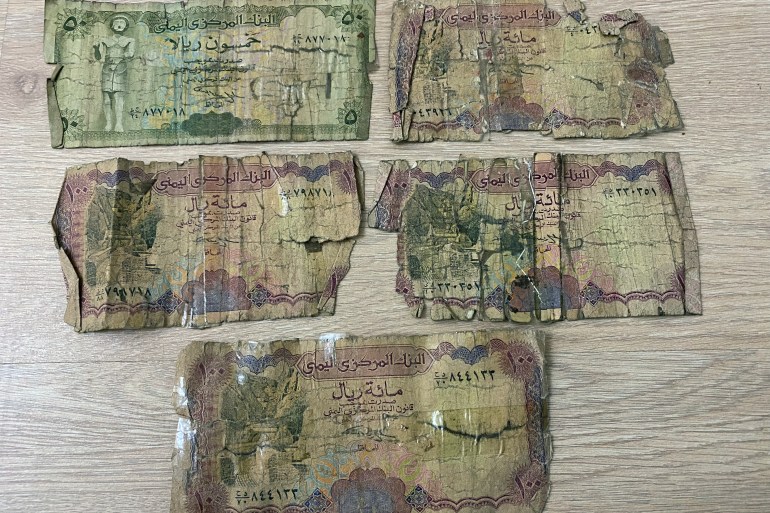
Surviving on generosity
For my aunt, who used to be a teacher at a state school, it was the same. “I used to receive a salary of 40,000 Yemeni riyals [$160 at the official rate] before the war. But I stopped going to work in 2017 because they stopped paying me.
“I tried to find another job in another school, but they only offered me 20,000 riyals [$80]. What can I do with that today? Our house rent on its own is 35,000 [$140].” My aunt has stopped trying to find work, and stays at home, her family solely reliant on her husband’s salary.
The solution, as presented to me by everyone I spoke to was simple: They didn’t want aid or donations as that wouldn’t help them in the long term. What they wanted was their jobs, decent salaries, and an end to the depreciation of the national currency and inflation.
Clearly, that will not come for a long time. And so I asked myself, how are people surviving?
Quite simply: on each other’s generosity.
In both Sanaa and Aden, where I spent a week, I was struck by how people looked out for each other, something that I have often missed in Sweden. As Ramadan wound down, I was reminded of the traditions that I had left behind in Yemen. Our neighbours would knock on our door and bring us food, unasked.
My mother would do the same for them, cooking big portions of food and sharing it with whomever she could. I would go shopping with Najat, but instead of buying clothes for herself, she was buying special clothes for Eid for the children in her neighbourhood.
“Let me buy clothes for those poor kids as a charity,” she said as we were heading to the shops.
“I heard one store had good sales, so we’ll go there. At least my bakhour business gave me some spare money last month.”
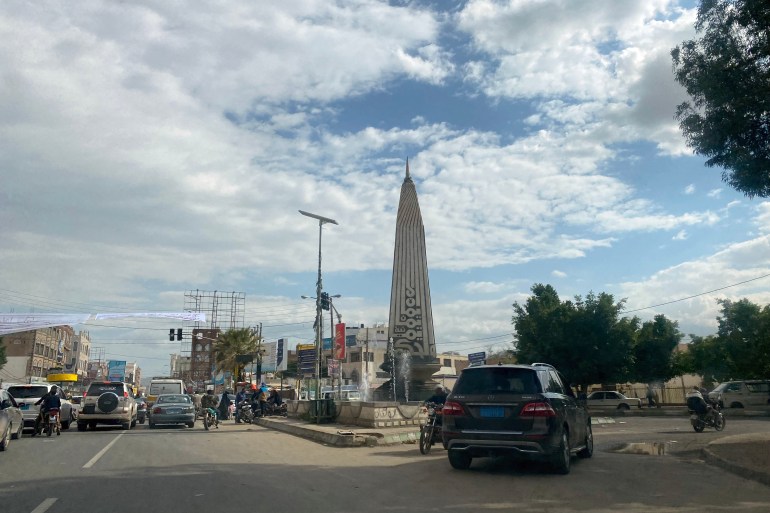
The Houthi state
As I travelled around Sanaa, I was reminded that I was in a city ruled by the Houthis.
The signs had been there even as we travelled to the city. At the checkpoints, the guards were less interested in where we were from, than they were in whether we observed the rules of their state, such as the use of old and tattered bank notes instead of the new ones used in government and STC-controlled territory.
The Houthis had banned the new currency, printed since 2019, seeing it as a way of undermining their control.
While the vibe of Aden – laid-back, cosmopolitan and welcoming – had been much the same as when I left Yemen in 2011, Sanaa had changed.
Without exaggeration, it feels like a city that has been invaded. When the Houthis marched in from the mountains of the far north of Yemen, they brought with them the visible signs of their rule – the green posters depicting their slogan: “God is Great, Death to the USA, Death to Israel, Curse the Jews” – as well as the things that were harder to see, such as the way they have enforced their religious and political ideology on the people.
It felt like everywhere I went I could hear the voice of the group’s leader, Abdul-Malik al-Houthi.
His location is unknown, hidden away out of fear of a Saudi air attack, but his voice could be heard from cars with large speakers on top, replaying his latest speech.
The brainwashing has had its effect. On the walls of Sanaa, alongside the Houthi slogan, are posters of their “martyrs”.
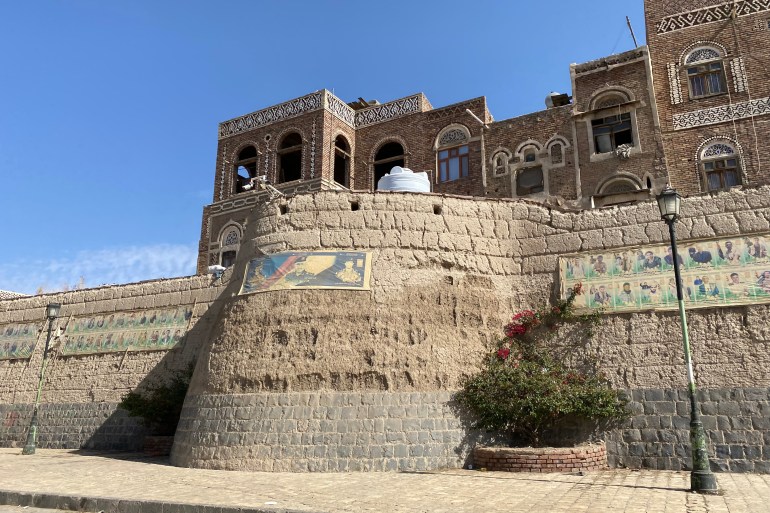
‘Death to this and death to that’
The Houthis have sent thousands to the front lines to fight the government and the STC. Many of the faces staring back at me from the posters were children. Seeing that was devastating.
“Death to this and death to that,” said Najat, as we passed by one of the Houthi posters. “It’s terrifying. I don’t know how I can protect my seven-year-old daughter from hearing that, it’s everywhere I go. Imagine your children growing up in a culture that glorifies death. What kind of future will we have? What kind of generation are we creating?”
My relatives and friends told me to be careful of the Zaynabiyat as I walked the streets. Female forces recruited by the Houthis to carry out a wide range of security and military services, including intelligence gathering. They are hard to notice as they walk in civilian clothing and can’t be picked out of a crowd.
The Zaynabiyat, some of them brought in as young girls, are recruited through a mix of ideology and economic incentives.
“Never speak to a woman you don’t know at a wedding,” Najat said to me one day, as my mother listened. “You never know, she might be one of the Zaynabiyat. At one wedding a woman was talking to me and started asking me if I wanted to contribute to the Houthi war effort by donating my jewellery. She told me she was one of them.”
My mother interjected. “Last year one of our neighbour’s sisters was summoned to the police station – she had said something against the Houthis at a wedding. One of the Zaynabiyat definitely heard her.”
The United Nations Panel of Experts on Yemen has reported that the work of the Zaynabiyat is to repress and control women in prisons, professional workspaces and in public places.
“If you’re discovered, they [the Houthis] will detain you and torture you,” I was warned. It reminded me of an article I read a few years ago, detailing the abuses, such as beatings and psychological torture, committed against dissident women by the Houthis.
I also remembered the ordeal of the detained and prosecuted Yemeni model, Intissar al-Hammadi, who I had researched for my previous work at Human Rights Watch.
Intissar is still in a Houthi prison. Sanaa has become the heart of a republic of fear. The Houthis claimed they were bringing a revolution against the corrupt when they took the capital in 2014. But they have now become the corrupt, imposing their ruthless political and security repression on everyone in the areas they control.
Meanwhile, members of the internationally-recognised government of Yemen have also been accused of being involved in abuses. According to human rights groups, Saudi Arabia, along with the UAE, has conducted indiscriminate attacks on civilians and civilian infrastructure in many parts of Yemen.
All parties to the conflict have been accused of committing violations of international human rights laws that rights organisations say could amount to war crimes.
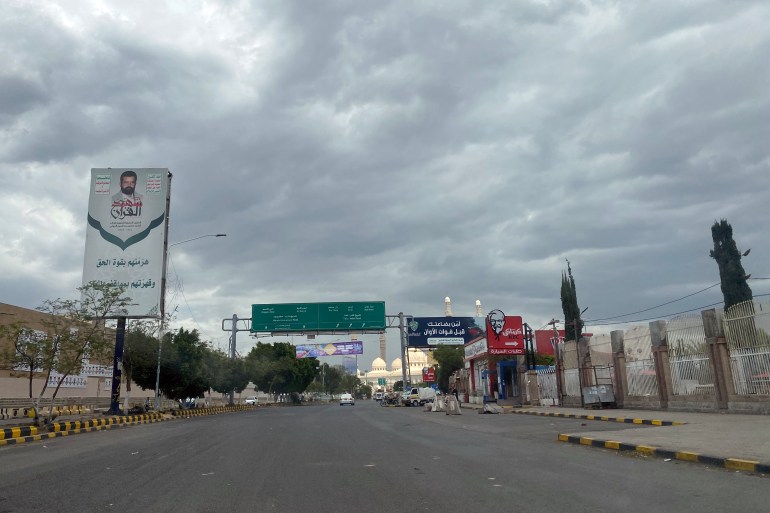
New Yemens
It’s impossible to predict what the future holds for Yemen. The current de-facto division is likely to become permanent. The Yemeni state I grew up in has disintegrated.
All the stories my family and friends told me during my visit demonstrated to me that the eight-year conflict has split the country into many parts.
In the midst of the destruction, new Yemens are emerging, waiting for sufficient political will from either local or international actors to acknowledge it.
Ahmed and his Yemeni ID card, with his false home of Hadramout, started to make sense. “See, there is more than one Yemen today,” he said. “The reason I changed my ID and pretended that I was from Hadramout is because it’s seen as peaceful. The other Yemens, the one in the north, and the one in the south, are in a raging war. The division and rivalry between the north and the south is impossible to resolve. Northerners can have their Yemen. Southerners can have their Yemen. And I prefer the Yemen in Hadramout.”
Yemenis disagree on what the solution is. To me, the potential division of Yemen would be the lesser of two evils. In its current form, with the current circumstances and tension, unity has become catastrophic for citizens across the country.
If Yemen’s relatively young unification project ends, it might be shaky and risky, but at least people might have a second chance to envision a new stable country of their own.
Is this something I want? Not necessarily, but it’s rather a matter that I try to be realistic about.
In the last few days of my near-month-long trip, as I prepared to go back into my exile, Ahmed drove me in his car and we passed Sanaa University, where the 2011 uprising began.
There was the monument, the place we had called Change Square. “What do you feel when you see this place now?” Ahmed asked me. “One part of me feels like I am visiting a graveyard, where my generation’s dreams and aspirations for a democratic Yemen were born and died,” I responded.
“But another part of me thinks that there are no shortcuts for going from dictatorship to democracy. Counter-revolutions are inevitable. Just like Saleh was overthrown, the Houthis will be overthrown.”
Ahmed nodded. With at least some hope in his voice, he started speaking about the time when it all began for me, the 2011 revolution when I had so much hope for the country’s future.
“The past has shown that, no matter what, Yemen will continue to live, to survive and to resist.”
*Names have been changed to protect identities.



